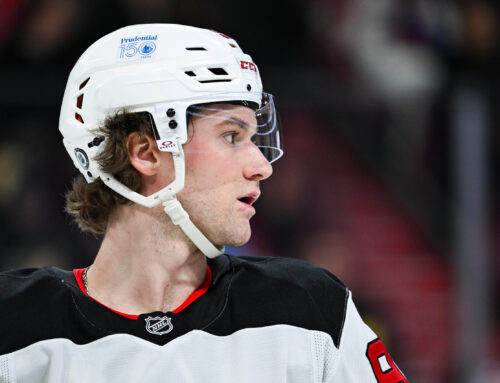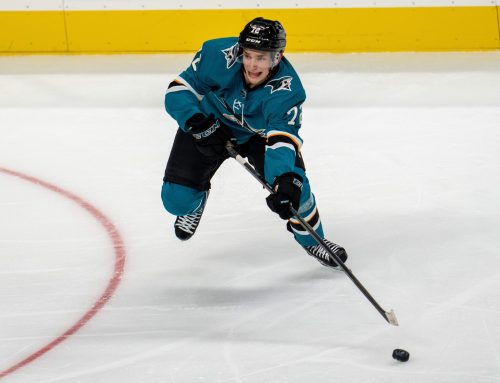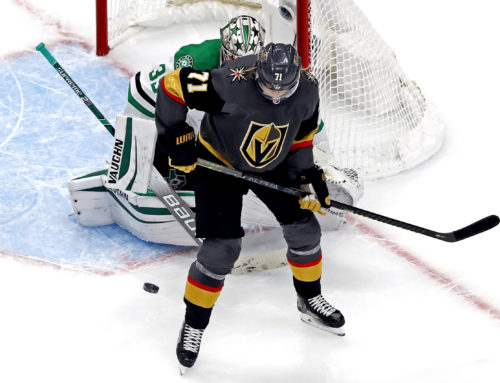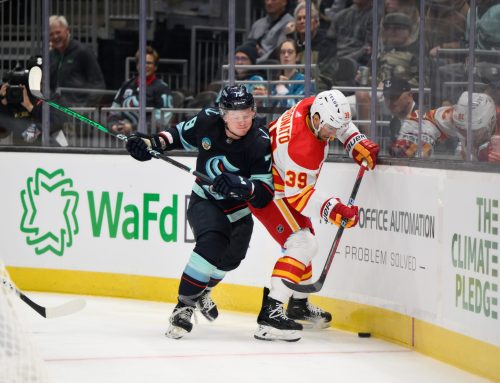
In this week’s installment we take a little break from the traditional analysis of even strength line production, and briefly look at some power play numbers. While these combinations might be less concrete than even strength lines, most of these players will be seeing significant power play time over the course of the season. We’ll look at some burning-hot power plays that might come back down to earth, and some cooler ones that should heat up. Since most teams are rolling four forwards with the man advantage, we’ll showcase the defenseman another time.
To put things into perspective before we begin, last season the best power play percentage belonged to the Buffalo Sabres (24.5%, 57 for 233), and the Vancouver Canucks had the second worst numbers (14.1%, 32 for 227). We’ll ignore the Colorado Avalanche (30 for 239, 12.6%), because they’re power play was just abysmal.
Alex Killorn – Nikita Kucherov – Vladislav Namestnikov – Steven Stamkos
Team Power Play Point Production: 49 | Line Power Play Point Production: 37 (76% of team)
I spent the last 10 minutes thinking of a weather-related lightning joke and of course these guys scored a gazillion goals in that time. Obviously, I don’t need to tell you how good these guys have been, but if you’re concerned about Namestnikov and Killorn not keeping their spots on Tampa’s top power play, this quartet has seen 50.23% of Tampa’s total power play ice time. While some teams shake up their top unit, these four have been deployed together consistently. Although a 28.6% success rate with the man advantage should drop a couple points throughout the season, they definitely have the firepower to be the best in the league. This one wasn’t on the power play, but it sure looked like the Bolts had an extra man…
Jamie Benn – Alexander Radulov – Tyler Seguin – Devin Shore
Team Power Play Point Production: 33 | Line Power Play Point Production: 27 (82% of team)
As hot as Tampa has been, the Stars have had the better power play to kick off the campaign. Currently clicking at 31.4%, Radulov, Benn, and Seguin are the Stars (get it?) of the league’s best PP despite being split up at even strength. However, I’m Shore you’re a little less familiar with the fourth forward of this unit: Devin Shore. The former second-round pick (2012) is entering his second season in the NHL and five of his seven points have come with the man advantage. The ‘70s was the last time we’ve seen power play percentages above 30, so don’t expect Dallas to keep this up all season.
Pavel Buchnevich – Chris Kreider – Mika Zibanejad – Mats Zuccarello
Team Power Play Point Production: 36 | Line Power Play Production: 24 (67% of team)
It’s amazing what a hot stretch can do for a team. While going 8-2 in their last 10, the Rangers have rocketed up the standings and currently sit third in power play success (25.8%). While Kreider, Zibanejad, and Zuccarello have played with each other on the PP before, it had been with Derek Stepan. However, Pavel Buchnevich has filled his spot pretty admirably. Entering his second season in the NHL, Buchnevich is averaging 3:32 with the man advantage compared to last year’s 1:52. The Blueshirts have also been doing a good job of putting the puck on net while up a skater, their 61.7 shots per 60 minutes (on the PP) is good enough for top 10 in the league.
Jonathan Drouin – Artturi Lehkonen – Max Pacioretty – Andrew Shaw
Team Power Play Point Production: 23 | Line Power Play Production: 10 (43% of team)
Sacré bleu, can Drouin ever quarterback a power play! Last season he had 26 PPP, one less than the likes of Erik Karlsson and Connor McDavid. Now the Habs don’t have Kucherov, but Pacioretty has proven to be a pretty good goal scorer himself. Since I’ve been throwing a lot of numbers at you, I’ll admit that my decision to include this unit was heavily based on eye tests. Like me, Drouin has great vision. Shaw takes away the opposing goaltender’s vision. Pacioretty and Lehkonen can shoot the puck. Add that all up and you have a recipe for a pretty good power play going forward. I know this highlight features Drouin on the Lightning, but jeez…
Cam Atkinson – Nick Foligno – Artemi Panarin – Alexander Wennberg
Team Power Play Production: 10 | Line Power Play Production: 4 (40% of team)
Hey, you know who had a pretty good power play last season? The Blue Jackets (19.9%). Hey, you know who has a pretty bad power play this season? The Blue Jackets (9.6%). While Columbus did lose Sam Gagner (18 PPP last season), that doesn’t constitute a 10% drop off in PP production. Their numbers with the man advantage will improve, but may not reach the same level as last season. This season’s expected goals for per 60 minutes (on the PP) is a league-worst 4.84, compared to last season’s 7.07.
Patrick Kane – Brandon Saad – Jonathan Toews – Patrick Sharp
Team Power Play Production: 23 | Line Power Play Production: 3 (13% of team)
This is arguably one of the most well-rounded power play units. Sure, Sharp might be past his prime, but these guys are familiar with each other. These guys have won Stanley Cups together. Chicago has had the most power play opportunities in the league (77) but somehow have a worse success rate than the Arizona Coyotes… (14.3% vs. 14.8%). As you would expect, the special teams’ line blender has been working hard for the Blackhawks as this combination has only been seen 16.63% of the team’s total power play ice time. Alex Debrincat, Richard Panik, Nick Schmaltz, Ryan Hartman, and Artem Anisimov have also been part of Chicago’s top PP unit. Expect the shuffling to continue until something clicks, but this team has too much talented to be this bad with the man advantage.
Jack Eichel – Kyle Okposo – Ryan O’Reilly – Sam Reinhart
Team Power Play Point Production: 12 | Line Power Play Point Production: 2 (17% of team)
Remember how Tampa Bay’s top unit produced 37 power play points? The Sabres produced two. Two. A number so small I have to spell it out to make it look bigger. While we’ve displayed some examples of power play lines that played a large portion of their team’s minutes together, Buffalo is a different case. The two most frequently deployed lines (22.47% and 9.88%) all featured Eichel, Okposo, and Kane, but Reinhart has had the edge over Kane so far. As mentioned earlier, Buffalo had the best power play last season, and currently has the third worst (14%) of the 2017-2018 campaign. It’s been a huge drop off that should turn around with a guy as talented as Eichel on the line.





 EDM
EDM STL
STL ANA
ANA TOR
TOR DET
DET NYI
NYI MIN
MIN CAR
CAR VAN
VAN NSH
NSH
